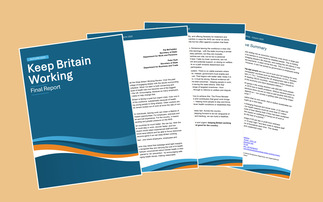Alan Sparks of Canada Life looks at what can be done to cross the barriers to growth that the group life market faces
We have been talking about the opportunity for Group Risk for the past three years in Cover, and now that the SME (sub-50 employee) employers are beginning to enter the pensions market, we see a real opportunity to promote group life benefits during these discussions.
The past few years for the group life market have seen significant growth in premiums on the back of automatic enrolment (AE) for pensions, but is this going to stop as the combination of a capacity crunch and pensions freedoms grab everyone’s attention? We hope not, and are planning for it not to.
The case for stagnation
The latest Swiss Re figures show an increase in group life premiums in 2014 of 8.9% following the 8.9% increase in 2013. The number of lives covered has risen: by 1% in 2014, after a 2.2% rise in 2013. Now, more than 8.5 million people are protected.
Much of this growth is linked to existing schemes expanding as companies went through automatic enrolment. Canada Life’s own internal figures show that our group life premiums have grown by more than £10m due to auto-enrolment (AE).
However, this source of new business may be beginning to dry up. Larger employers have completed AE, and a few are coming round to the three-year anniversary and re-enrolment.
The success of AE was reflected in fewer people not joining their pension scheme than had been expected, with just 9% opting out from the larger companies. As a result, the opportunity to pick up many new members at re-enrolment is limited as a secondary market emerges. It is illuminating to examine the impact of expansion on the typical membership of a scheme.
Before 2012 Canada Life saw the impact of the recession and legislation on the average age of the membership. For group life lump sum policies, this rose from 39.5 to 40.5 between 2008 and 2011. The market will have seen the premium impact of this delayed by the impact of rate guarantees, and a slow increase in claims volumes.
There were a couple of main reasons for the change. The recession was unusual, because there was not a big rise in unemployment. In 1984 unemployment peaked at 11.9%, and in 1993 it reached 10.7%. During the most recent downturn the peak was 8.5% in 2011.
We believe that this is because so many companies retained their workforce at the current level, neither hiring nor firing.
This was amplified by the changes in retirement legislation. Without a default retirement age, and possibly also because of the economic climate, employees have remained in work longer. Our own research suggested that 66% would not be able to retire for financial reasons.
ONS data shows that the proportion of men aged between 50 and state pension age active in the workforce has risen from 75.7% to 77.8% between 2012 and 2014. There are now more than 1.4 million people in employment above state pension age.
Almost half are working because they feel they are not ready to stop, but one in six are doing so to pay for essential items.
By contrast, as schemes grow by AE, it has been younger age groups that have joined schemes. For example, ONS statistics show that in 2013 36% of employees aged 22 to 29 were in pension schemes, but this has risen to 53% in 2014. (5)
Overall, the effect of these contrasting drivers on group life is what appears to be slow rate hardening, which does contribute to the increase in premiums. However, as these effects are specific to the changes in any particular scheme, these may appear to be selective or random.
Economic growth could mean that the demographic drivers of premium increase may be fading away. When companies expand by hiring, they are more likely to take on younger employees with the resulting reduction in unit/benefit rates.
So far there have been few signs that wages are increasing more quickly, with regular pay increases at 2% or less each year since June 2011, despite falling unemployment.
Another challenge will be the death in service pension market. With interest rates and improved longevity for the survivors, the cost of providing this benefit has been increasing for years.
Swiss Re has shown that total premiums have risen by over 30% since 2010 but total insured benefits have fallen by over 20%.Perhaps this is being driven by questions over whether the benefit is valued by the recipient, as it is taxed as income, whereas a lump sum under the lifetime allowance will not be.
The recent proposals for pensions freedom at retirement are likely to cause more employers to look at the provision of protection and may increase the trend of insuring lump sums rather than a pension.











